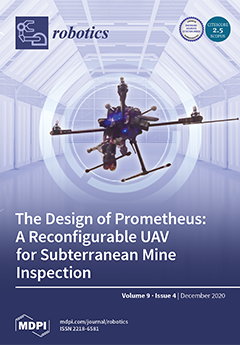Open AccessArticle
Bootstrapping Artificial Evolution to Design Robots for Autonomous Fabrication
by
Edgar Buchanan, Léni K. Le Goff, Wei Li, Emma Hart, Agoston E. Eiben, Matteo De Carlo, Alan F. Winfield, Matthew F. Hale, Robert Woolley, Mike Angus, Jon Timmis and Andy M. Tyrrell
Cited by 13 | Viewed by 6830
Abstract
A long-term vision of evolutionary robotics is a technology enabling the evolution of entire autonomous robotic ecosystems that live and work for long periods in challenging and dynamic environments without the need for direct human oversight. Evolutionary robotics has been widely used due
[...] Read more.
A long-term vision of evolutionary robotics is a technology enabling the evolution of entire autonomous robotic ecosystems that live and work for long periods in challenging and dynamic environments without the need for direct human oversight. Evolutionary robotics has been widely used due to its capability of creating unique robot designs in simulation. Recent work has shown that it is possible to autonomously construct evolved designs in the physical domain; however, this brings new challenges: the autonomous manufacture and assembly process introduces new constraints that are not apparent in simulation. To tackle this, we introduce a new method for producing a repertoire of diverse but manufacturable robots. This repertoire is used to seed an evolutionary loop that subsequently evolves robot designs and controllers capable of solving a maze-navigation task. We show that compared to random initialisation, seeding with a diverse and manufacturable population speeds up convergence and on some tasks, increases performance, while maintaining manufacturability.
Full article
►▼
Show Figures





